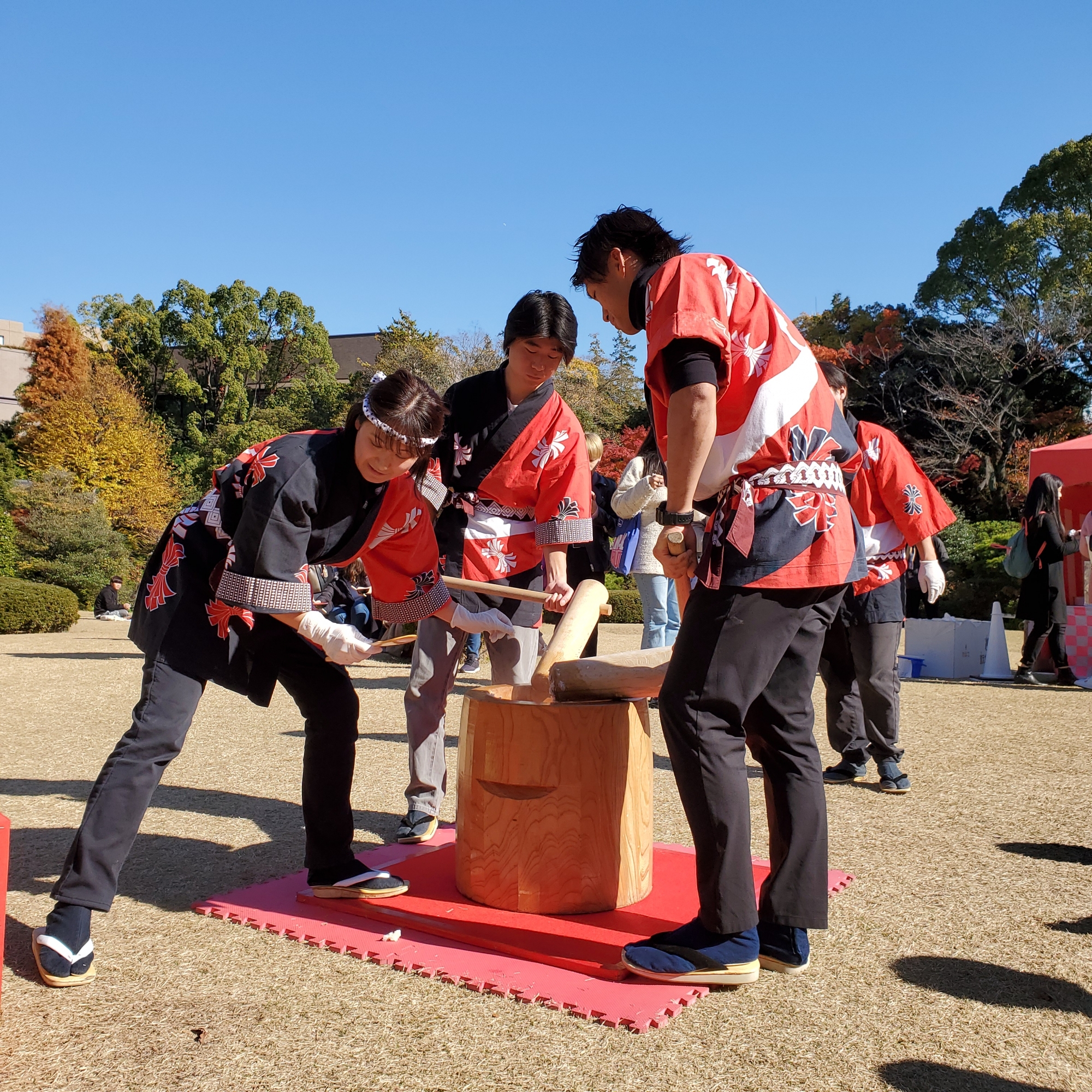Mochitsuki – Rice Cake Making
Mon, Dec 23, 2019-
Tags
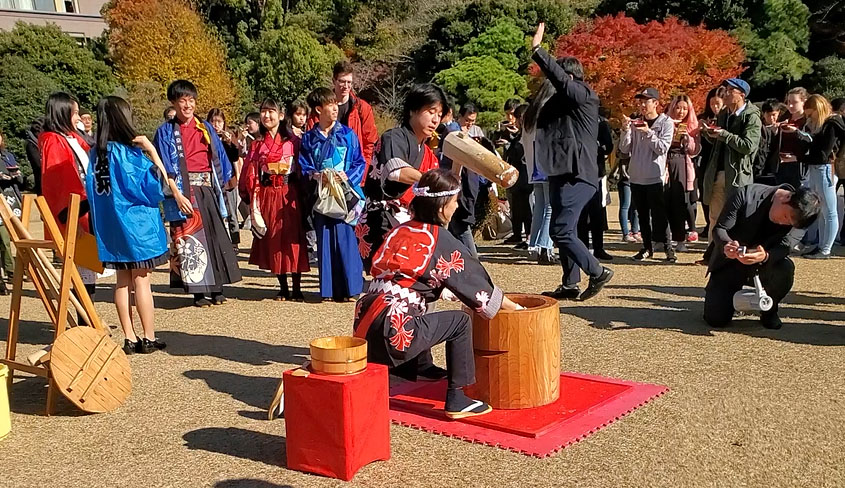
Mochitsuki – Rice Cake Making
Mochi, Japanese rice cake, is an important food to many Japanese occasions, festivals, and ceremonies. The rice used to make mochi is rinsed and soaked overnight. Early the next morning, the rice is divided into wooden steaming baskets and placed on top of each other. The steamed rice is then placed in a large mortar to be pounded into paste. The rice is pounded until it is completely smooth and shiny, individual pieces of rice indistinguishable. The mochi can now be cut into different sizes and made into various shapes. This versatile rice dough can now be used in a sweet or savory dish. The process of pounding rice into mochi is called Mochitsuki.
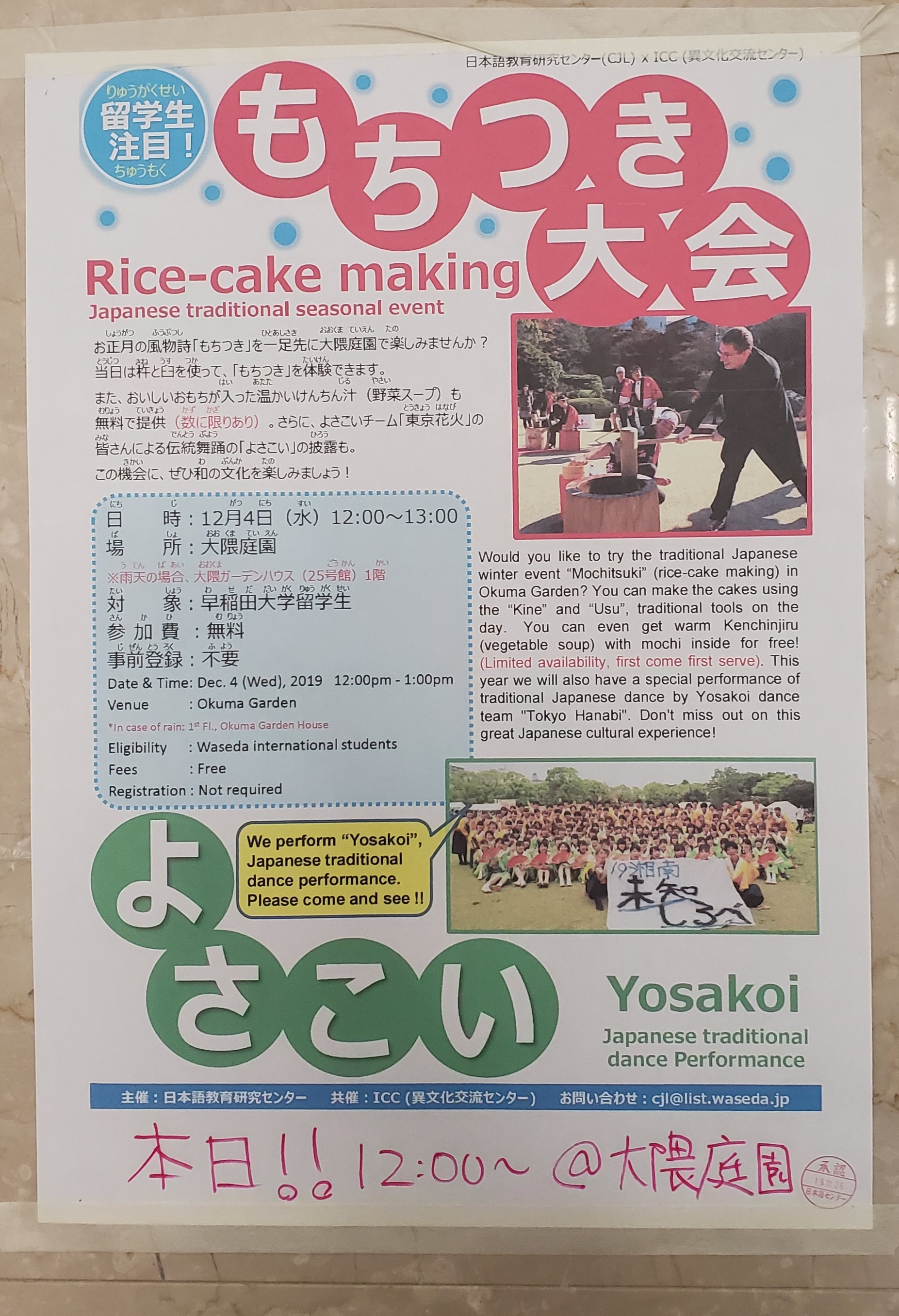
Mochitsuki event poster
Emails had gone out and signs were posted all over campus, inviting international students to participate in Mochitsuki, the traditional winter event of making rice cakes. At Waseda, days are divided into periods. For example, Period 1 is from 9:00-10:30, Period 2 from 10:40-12:10, a 50-minute lunch break, Period 3 from 13:00-14:30, and so on. The Mochitsuki event was from 12:00-13:00. While most of the event was over the lunch break, I had both second and third period on that day. This meant that I would either have to miss part of two classes or arrive to Mochitsuki late and leave early. However, I was pleasantly surprised by my professor. At the beginning of class, she put up the Mochitsuki event poster on the board and told us that class would be excused early so that we could attend the event.
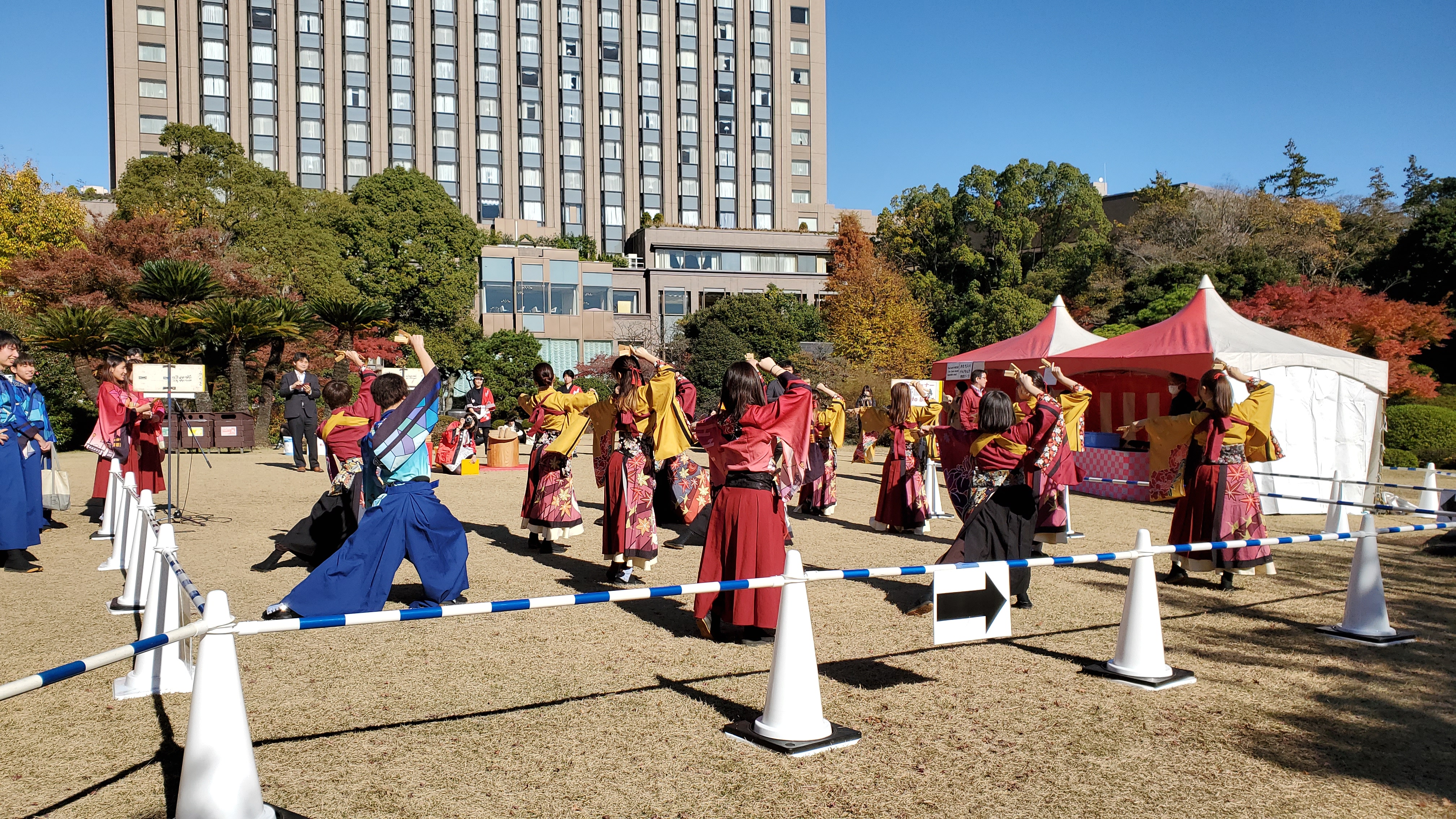
Tokyo Hinabi dance team practicing before the event
As soon as we were dismissed, my classmates and I rushed to Okuma Garden. There were two big booths on the lawn facing each other. In the space between them, part of the lawn was sectioned off to serve as a stage. Since we were early, we got to see two groups from the same dance troop take turns practicing for their performance. The dance troop’s name was Tokyo Hanabi. In front of the makeshift stage was a huge wooden mortar that would later be used to pound rice into mochi. As the big clock tower chimed 12:00, announcements were made for students to line up. The two booths served kenchinjiru, a vegetable soup dish with mochi. It was a sunny day, but the weather was still cold, and the soup helped warm the guests as they gathered together.
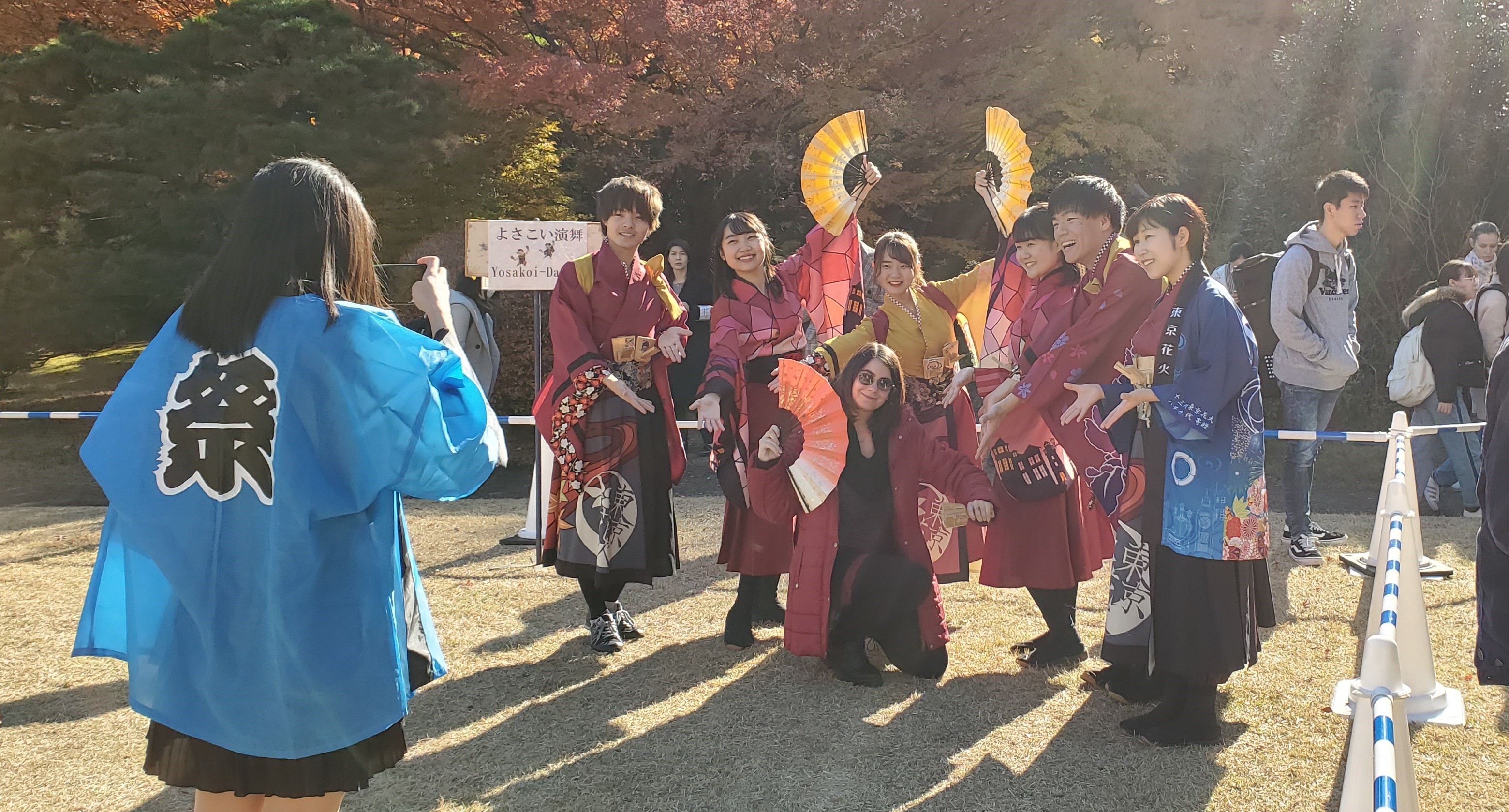
Student poses with Tokyo Hinabi dancers
At about 12:15, Tokyo Hanabi’s first group of dancers came onto the stage. They would be performing a dance called Hikara in the Yosakoi dance style. Yosakoi is known for its use of traditional movements, set to modern music. The dance Hikara represents Japan in the early 20th century, the Taisho Era. At that time, new cultures from overseas were coming to Japan and new practices were mixing in with old traditions. The men were dressed in blue kimonos and the ladies in red. To emphasize certain movements and beats in the song, the dancers used hand fans and narukos. Naruko is a wooden hand clapper. Besides its use as an instrument in dances and festivals, naruko is also used by farmers to scare away birds. The lively music, energetic movements, chants, and beats added by the naruko all came together in a beautiful performance. Unfortunately, I was unable to see their second performance in full since I had to leave early for my Period 3 class.
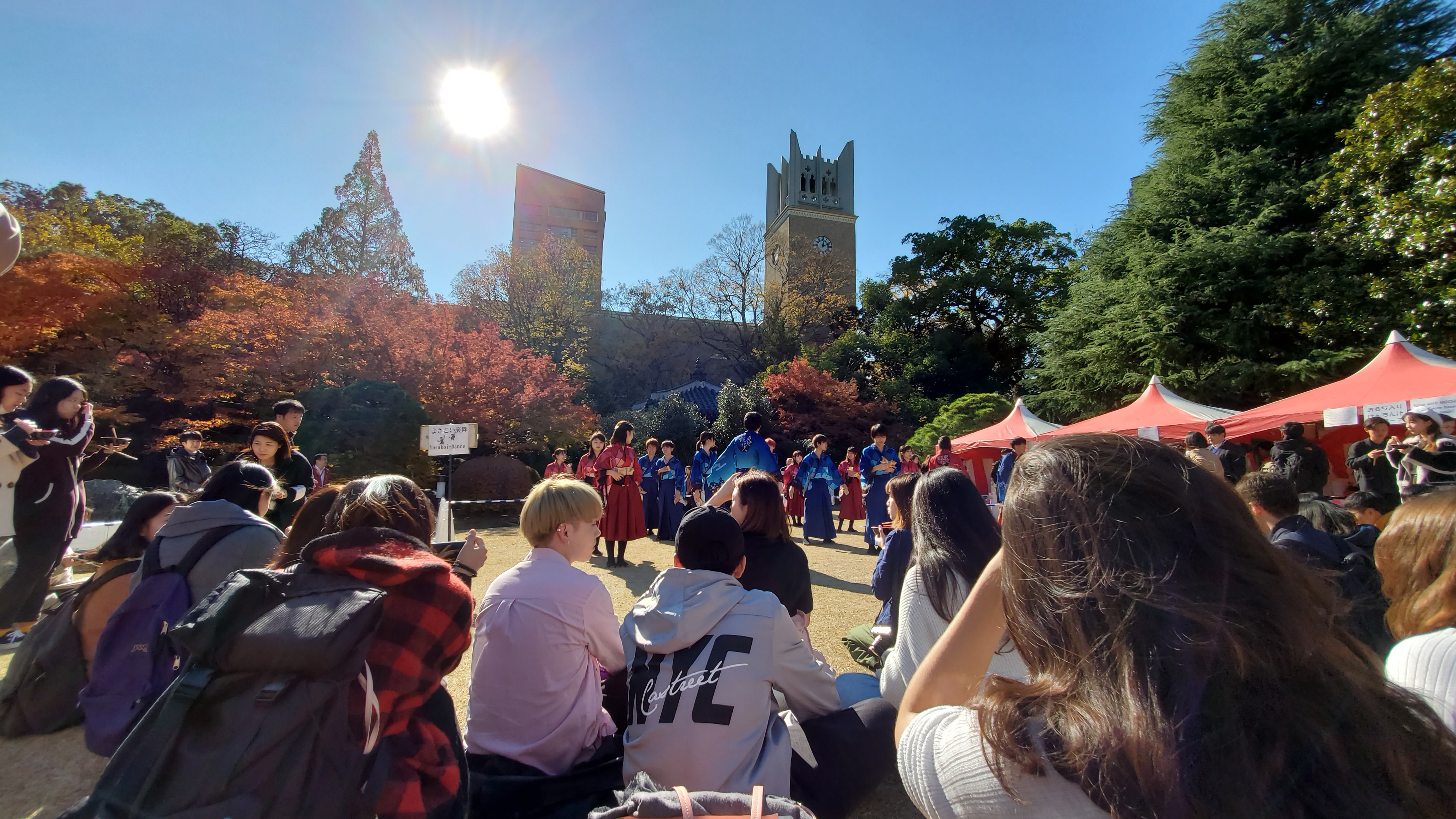
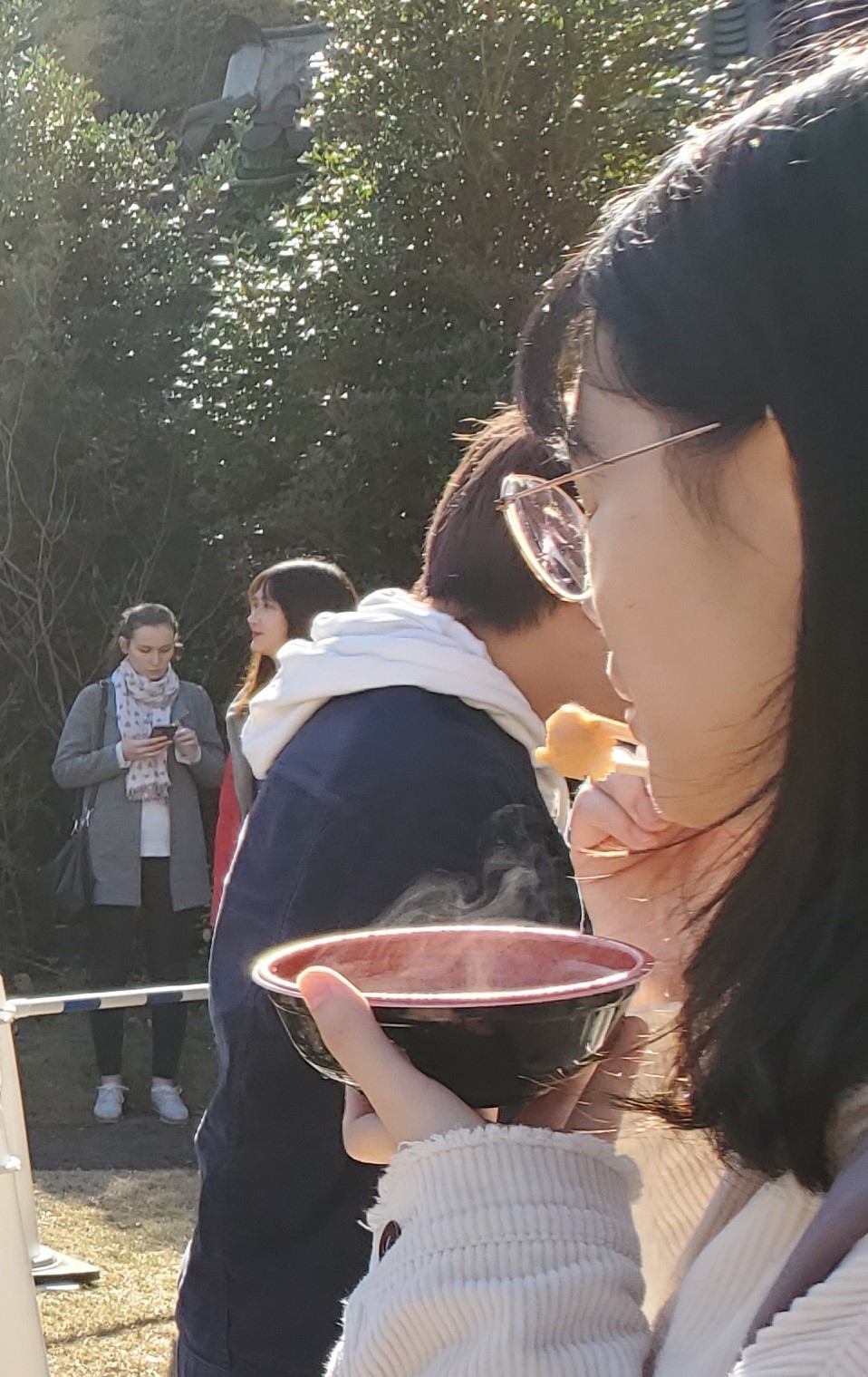
Student eating a hot bowl of kenchinjiru
After the dance, students continued to eat and lounge about the garden, sitting on the lawn or smooth rocks, talking to friends. A photo area was opened up and dancers from Tokyo Hanabi posed for students wanting pictures. At this time, students were also given the opportunity to try pounding rice into mochi. Students lined up in front of the usu, the wooden mortar. There were different techniques to turn the rice into paste and two Japanese students demonstrated. Each held a huge kine, or pestle. They pressed the rice down with the kine, walking in a circle around the usu, evenly crushing the rice. A third person came up and used water to clean the rice from the kine and the two students resumed their work. As they moved, the rice changed consistency, the rice adhered to each other, starting to look more like the desired paste. They then switched techniques, taking turns pounding the rice. After every few strikes, the rice was turned, and the kine cleaned. The rice was looking more and more like bread dough instead of individual grains. As the line moved forward, I was finally able to take up the kine. I felt its weight in my hand, adjusted my grip on the handle, then swung it back. As I brought down the kine, striking the rice three times, I partook in a tradition that could be traced all the way back to the Heian period. Mochi was believed to bring good fortune for the new year and Mochitsuki was an important part of that tradition.
The Mochitsuki event was able to introduce different aspects of Japanese culture to international students. This was done through food, music, dance, and the experience of making mochi. After trying my hand at pounding rice and using a kine, as the second dance was starting and before I headed back to class, I went around the garden, asking students how they felt about the event and if they have learned something new. Everyone I spoke with was glad to have come. Some of them did not even have class that day but came to campus to attend Mochitsuki and celebrate. Some students were coming to the Mochitsuki event for the third time. They told me how some elements of the event had changed over the years and how they really appreciated the effort that went into putting on this event. They really appreciated that Waseda continue to host Mochitsuki from year to year. As an international student, I am grateful to Waseda for hosting the event as well as having faculty encourage their students to participate. Mochitsuki is usually celebrated as a family or as part of a community. For all of us international students far from home, Waseda gave us the wonderful privilege to celebrate winter, the end of 2019, and the beginning of the new year and a new decade. In putting on the Mochitsuki event, we had family and community to celebrate with.
*This article was written and contributed by the following student.
Student Contributor
Gabriella de Asis
Exchange Student from California State University, Northridge
(Currently studying at Waseda’s School of International Liberal Studies)


